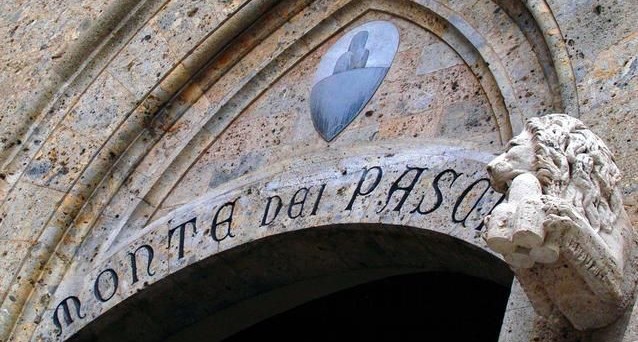Because Mps is now a zombie bank

All the troubles of Mps. The analysis by Fabio Pavesi, a journalist expert in finance and banking already at the Sole 24 Ore
Is there still someone, not only in Siena, who believes in Mps's industrial plans? The question is more than legitimate, after Consob forced the bank to disclose to the market the new industrial plan approved on 17 December last and which was kept indoors in a drawer.
Looking back, one would say that that plan risks becoming just waste paper in a short time. As was the case for all of his predecessors.
No industrial plan (at least 4 have been approved) in the last decade has ever been respected. Reality has destroyed any ambition written on paper.
Suffice it to say that in the 2017-2021 plan, in force until the next and updated today, these objectives were set for 2021: a net profit of 1.2 billion, a Roe of 10% and a Cet1 of 14%.
Not only. For 2019, therefore, pre Covid revenues were expected to reach 3.8 billion, a cost income of 62% and a Roe of 5.7%. Well do you know how Mps is today? Diametrically opposed to the prefigured objectives.
In September 2020, the latest available balance sheet, revenues stood at € 2.2 billion, down by more than 9% over the nine months of 2019. The main item of core business fell sharply.
The interest margin fell by 16% in just one year. No bank, even in the Covid era, recorded such a pronounced drop in revenues. And last but not least, in the last line of the balance sheet, there is yet another billionaire loss: a loss of 1.5 billion that is added to the losses of over 20 billion that the bank of Siena has collected from 2009 onwards. Obviously, assuming that the profit this year is 1.2 billion is pure fantasy. So much so that today we are on yet another bank business plan.
Will this time again be yet another dream book? Let's see the objectives that the plan sets itself in a stand-alone perspective. For the top management of MPS, revenues will return to just over 3 billion only in 2023. In fact, the bank will not grind new revenues compared to the existing one. In 2020 it will close according to the plan with 2.93 billion, while it was 3.3 billion in 2019. A level that the bank hopes to catch up even in 2025. A crossing in the desert, given that it will take another 5 years just to equalize the revenues that were produced in 2019.
It is striking to think that the bank generated revenues of over 4 billion in 2016. In just 4 years, the institute lost almost 30% of its income on the street. And that even in 2025 it will never get close to that level of revenues. The interest margin alone will go at a crawl rate given that in 2025, according to MPS leaders, it should be 1.35 billion, 150 million below the 2019 level.
Even if it will keep the spread between lending and borrowing rates, the decline is due to net loans to customers which from 86 billion in 2021 will drop to 81 billion in 2025. Revenues that do not hold up with loans that decline. Certainly not the business model of a bank that stands alone.
The first significant profit should only be seen in 2023 with nearly 300 million in net profits. All certainly not due to the increase in revenues, but to the usual cost cuts (for around 200 million in 3 years) and the elimination of adjustments on bad loans for around 300 million.
Certainly the bank with the sale to Amco (public bank that sells to a public company) of the amount of bad loans that has dragged on for years, has cleaned up the balance sheet. But certainly not decisively. Suffice it to say that even with the public aid, gross non-performing and substandard loans at the end of 2020 were 4.2% of total loans. And that the bank's top management thinks that in the wake of Covid they will be destined to increase again.
The gross Npl ratio is expected to rise from 4.2% in 2020 to 6% this year and to 7.3% in 2023. In fact, almost doubling and requiring almost half a billion devaluations per year in the three-year period 2023 -2025.
Therefore, to think that the transfer of bad loans to Amco has put the bank in total safety is illusory. As with all banks, there will be a new cycle of increase in bad debts due to Covid in the coming years.
In the case of Mps, however, the increase in budget write-downs will not be matched by an increase in revenues such as to offset the new provisions. This is why the bank of Siena among the big Italian banking companies will continue to remain the neglected Cinderella. And this is always the case that, for the first time in the decade, the new industrial plan achieves its objectives.
Otherwise, the Tuscan zombie bank will need yet another injection of capital, like the one for over 2 billion that awaits the shareholders already this year.
And even if the plan does come true, only in 2023 will MPS be able to produce a very modest Roe of 3.7%. A return on capital that is too low to survive on the market. Let alone if things don't go well (as has happened punctually over the past 10 years).
Article published on affaritaliani.it
This is a machine translation from Italian language of a post published on Start Magazine at the URL https://www.startmag.it/economia/perche-mps-e-ormai-una-banca-zombie/ on Sun, 31 Jan 2021 15:24:29 +0000.
